- Home
- James Patterson
Walk in My Combat Boots Page 2
Walk in My Combat Boots Read online
Page 2
As soon as I know he’s out and clear, I jump out and jump back over the wall. Immediately we back off enough so the birds can drop fire.
I catch my breath and think to myself, I don’t think I can walk anymore.
I fall over.
I’ve been running on straight adrenaline, it was the only thing keeping me going, and now I’m starting to come off of it and my body realizes how tired it is, and I collapse.
I lie on my back in between rows inside a grape orchard, waiting for the fire to come, and I start thinking about Kevin. I pray he’s okay, wherever he is. Safe.
We’re going to go home, together, I keep telling myself.
The birds arrive and destroy the trench line from one end to the other.
JODI MICHELLE PRITCHARD
Jodi Michelle Pritchard’s father was in the Air Force. She was born in Ohio, and when she was six months old she moved to Berkeley Springs, West Virginia—a one-horse town that had one stoplight. An only child and a self-described tomboy, Jodi loved playing in the dirt with G.I. Joe figures, and at an early age she fell in love with the military. Her great-grandfather served in World War I, her grandfather in World War II, and her father volunteered to go to Vietnam. Jodi wanted to continue her family’s military legacy and, like her father, joined the Air Force. In August of 1998, with a certification as a national registered paramedic, she attended basic training at Lackland Air Force Base in San Antonio, Texas. She’s a flight nurse in the West Virginia Air National Guard. Her current rank is major.
My turn comes in 2003. I’m going to Iraq, as part of Operation Enduring Freedom.
We board the C-141 military transport plane with our medical equipment bags, flight gear, and chemical gear. IV pumps, cardiac monitors, and all the critical medical equipment we need are already all laid out, but we have to configure the space by hanging straps and putting up poles for our litter stations.
I also have my personal bag with me. It contains my death letter, my final message to my loved ones. I hope to God I don’t need it.
I’m a senior airman but, at twenty-three, the youngest of the group.
Tonight, we’re flying to Baghdad, which is not only the safest, most secure spot for us to land, it’s also the most central location to collect our patients: wounded soldiers, children, even prisoners. We’ll load them up and make the six-hour flight back to the Ramstein Air Base in Germany.
Our pilot briefs us before we take off. “Listen, when we get into Iraqi air space, we have to go dark.”
“What does that mean?” I ask.
“We kill the lights and go in under night vision. You guys will have to use your goggles. Then we’re gonna do an assault landing.”
Oh, my gosh. I’ve done a practice assault landing on a C-130. A 141 is a completely different plane. A 141, I’ve heard, has to basically do a spiral in order to get to the ground.
When we hit Iraqi air space, everything goes black—no lights, just night. I’m buckled in. The loads block all the windows, and we can’t get up and see what’s happening outside.
I put on my helmet and flak vest.
The loadmaster looks at me and says, “You have to sit on it.”
“Sit on what?” I ask.
“Your flak vest,” he says. “When we spiral down to land, they’ll shoot at us, and the bullets can potentially come through the plane. Because of their direction, if you’re sitting on your vest, you’ll have a much better chance at not getting shot.”
“Well, why do I gotta wear a helmet then?”
Everyone starts laughing, including the loadmaster. It’s a comical moment, but I’m thinking: What the hell did I join?
We’re all sitting on our flak vests when we go radio silent, though we can hear our strapped-down loads clattering against the plane floor.
There’s no chatter among us, but on our headsets, we can hear the pilot, copilot, and engineer synchronizing, going through their checklist. “Okay,” I hear the pilot say to the copilot, “we’re starting our descent.”
The plane starts a hard-left rudder turn.
Starts to bank.
Then we start to do a spiral. It’s like a huge corkscrew—a roller coaster from hell.
And it keeps going and going and going.
The pilot says, “Gunfire, eleven o’clock.”
I can hear it, the gunfire happening outside.
They’re shooting at us.
The copilot says, “Gunfire, two o’clock.”
Even if the windows weren’t blocked, I couldn’t see the gunfire because I’m not on night vision. But the pilots can see it, and the plane is spiraling and spiraling—
Bam, we’re on the ground, pulling back the engines.
I have no idea what’s about to happen next.
They lower the ramps. A representative from the hospital and one from MASF—the Mobile Air Staging Facility—come on board, hand us paperwork, and start talking, only we can’t hear them because the plane’s engine is still running. Why haven’t they shut down the plane?
I quickly find out why: the airport is hot. The base is getting hit by multiple mortars.
“I can’t hear you—we can’t hear you,” I shout. “Just bring them on board, we’ll deal with it.”
We load the patients and take off. We have to corkscrew up for the same reason we had to corkscrew down—to avoid the antiaircraft threat.
Ten of our twenty patients are stretched out on litters. Good God, these poor things—some of them are all shot up, and some have lost limbs. One soldier is in a torturous-looking metal traction device locking together the ball of the hip to the femur bone. The contraption looks straight out of the horror movie Saw.
We run around with rolls of white medical tape, tear off an inch or two, and stick it to each pillow. On the tape, we write the patient’s pain scale, the wound location, the medication and dosage he receives.
We have to treat the patients while also dealing with the stresses of flying—like the g-forces which can be a detriment to a patient’s IV bag. We’re constantly adjusting IV bags—and we’re constantly looking in on the man in the traction device. His leg bones, held together by pins, rattled during takeoff, and they rattle every time we hit turbulence, causing him massive pain even though we’re trying our best to keep his leg as padded as possible.
Someone screams to use the rest room. He wants to get off the litter but can’t because he’s missing a leg.
Someone screams for narcotics. Beside him, another patient sits quietly, staring. With all that’s going on inside his head, he can barely answer our questions.
I check on a soldier who is missing half of his face. He looks up at me and says, “Ma’am, I need to know when this plane’s going to land. I need to know when I can get back to Iraq.”
“You’ve been shot, honey. Why don’t we give this some time, okay? You’ve been through a lot.”
“No, I want to go back.”
“I understand that. I get it. And I want you to go back. I do. But first we’ve got to get you to Ramstein so the doctors can take care of you. Let your body heal, and then we’ll get you back.”
“I’m good, I want to go back, I’m ready.”
He’s not the only soldier who says this to me during the flight. All the guys on board want to go back. Every single one.
That same year, our commander brings us into a room to explain our next mission.
“Your crew has three critical care nurses, and you’re one of the most highly qualified teams we have here at Ramstein,” he tells us. “We have three patients who are pretty sick.”
“How sick?” I ask.
“They’re going to die. They’re going home to die. We need to fly them to Bethesda, Maryland. You need to keep them alive until you get to Walter Reed.”
You can do this, I tell myself. “Okay,” I tell the commander. “We’ve got this.”
We’re given the plane’s tail number. The crew—all five of us—get out of our car and find the plane w
ithout a problem. I step on board.
Freeze.
What the hell is going on?
The front half of the plane is filled with caskets. Six of them.
Soldiers are draping an American flag on each one.
We stand there, in shock. I take a deep breath and turn to my captain, Gino Crotchwell. “Okay,” I say to him. “Obviously, we’re on the wrong plane. I’ll call and reconfirm.”
I radio in the tail number. The answer is quick: we’re on the right plane.
Joining us for this mission is a critical care transport team. We get the plane configured for our three patients, who come on board unconscious and unresponsive. After we get them settled, we find out they’re being accompanied by what we call PAX—meaning passengers.
I pull Gino aside. “Putting people on a plane with a flying ICU on one half and a flying morgue on the other—they won’t be able to handle that.”
“I hear you,” Gino says. “But we’ve got to get these guys home.”
“They won’t be able to sit with us, because of all the medical equipment—and we need room to move around so we can care for our patients properly. That means—”
“I know.”
“—they’ll have to sit close to the caskets.”
Gino nods in understanding, takes in a deep breath. Holds it.
“We’ve got to get these guys home,” he says again.
Before the passengers board, I gather the small group—mostly male soldiers and one woman dressed in civilian clothing. I gently explain what to expect inside the plane and then ask them if they’re okay with this.
The men say they are. I look to the woman and say, “Ma’am, are you okay?”
“Yes,” she replies. “I’m okay.”
We take off. A couple of hours into the flight, some of the passengers get up and move around a bit. I walk over to the caskets to say a prayer. A soldier is standing next to one, his head down, his face etched in grief.
“That’s a medic right there,” he says, nodding with his chin to the casket in front of him. “It was his last mission.”
He takes a deep breath, his voice shaky when he says, “I was with him when he got shot and killed.”
He shows me a picture of a man wearing sunglasses and his full uniform. Blond hair, just as young as can be.
“I’m sorry,” I say. “I’m so sorry. Is there anything I can do for you?”
“No, ma’am. I’m taking him home.” He swallows. “I’m just going to take him home now.”
I quickly gather myself and then return to check on my patients. They’re doing fine. The woman in the civilian clothes, I see, is crying. I tell my crew I’m going to go up there to make sure she’s okay.
“Ma’am?” I gently ask. “Would you like to go up to the cockpit, get out of this environment?”
She shakes her head. “I don’t need to go anywhere.”
“Are you sure?”
“That casket right there,” she says, pointing. “That’s my husband.”
Oh, my God.
“He died in the UN bombing,” she says. “I had to come over and identify the body. Now I’m bringing him home.”
I can’t even begin to imagine the nightmare this poor woman finds herself in. “Ma’am, I’m so very sorry for your loss. If there’s anything I can do—anything—please understand I’m here for you.”
“Thank you,” she says.
When we land, we accompany our patients to Walter Reed in an AmbuBus, a supersized white ambulance painted with a big red cross.
We arrive at the hospital, get our patients sorted out inside, and return to the bus to retrieve our equipment. We’re all exhausted. We’ve been up and working for nearly sixteen hours.
I grab a heart monitor. I’m rolling it out of the AmbuBus when I feel a tug on my flight suit. I turn around and see a little girl with curly hair. She’s five, maybe six. It’s night and chilly out, and she’s wearing only little white stretch pants and a little white shirt.
I also notice a frantic woman standing directly behind the girl.
“Is this your mom?” I ask the girl.
She nods. “Did you bring my daddy home?”
I get down on one knee. “What’s your daddy’s name, sweetheart?”
She tells me.
Her father is one of the patients I brought home to die.
“I did,” I say, feeling sick all over. “I did bring him home.”
“Is he okay?”
I glance at the woman. It’s obvious she hasn’t seen her husband yet but is fully aware of his grave condition.
“Can I see him?” the girl asks me. “Can I tell him I love him?”
“Sweetheart,” I say, “you’ll be able to go in to see him soon.”
And then I lose it. The woman does, too. I know I’ll carry this moment with me for the rest of my life.
The rage and everything else that memory drums up, the way it makes me feel inside—I don’t want to talk about it with anyone. I can’t talk about it even now, all these years later.
It’s become a problem.
A friend of mine suggests I seek counseling.
The psychologist is awesome.
I learn that it’s okay to feel angry. Or hurt or sad or whatever. Feeling these things doesn’t mean I’m beneath anyone or that I’m a social outcast. I’m not a detriment.
What I am is human.
And humans are not invincible. And while that may seem like common sense to some people, there are those of us who bury our feelings about difficult topics. Then, when we’re reminded of these feelings, we think we’re not right. We think we’ll get labeled by other people as someone who has mental problems.
“But you’re not,” the psychologist tells me several times. “You’re human, and it’s okay to have a problem.”
It takes me a long time to be okay with that.
Takes me even longer to tell this story.
And the remarkable thing? Even though I still feel the hurt as I say the words, it feels good to be able to talk about it.
I have a full sleeve tattoo dedicated to the patients I’ve lost over the years. It’s a reminder of what I’ve seen overseas, what I went through over there. It’s also a reminder for me to remember that it’s okay to feel the way I do.
I wouldn’t trade my life for anything in the world. I love wearing the uniform.
DON STEVENS
Don Stevens grew up in the Cincinnati, Ohio, area. His father served in the Air Force for twenty years, first as Security Forces and then, during the second half of his career, in physical fitness, where he trained Air Force boxing teams. When Don graduated from high school in 1990, he decided to follow in his father’s and brother’s footsteps and join the Air Force. That November, he began basic training. He deployed multiple times to Iraq, Afghanistan, Lebanon, Jordan, Turkey, and central Africa. He is a chief master sergeant in the US Air Force’s Special Operations Command. Don is also the chief, or senior enlisted leader, for the Special Tactics Training Squadron, which takes care of training combat controllers, pararescue men, special operations, tactical air control parties, and special reconnaissance operators.
You’ve got to be ready every day. Every single day. There are no excuses.
When I land at the Bagram Air Base in Afghanistan in 2008, I drag my boxes to my mud and rock accommodations. It looks like the Alamo. It’s got a metal door with a latch and that’s it.
I’ve been on the ground for maybe an hour and a half when the base starts receiving 105-millimeter rockets—big, gigantic rounds that shake the earth.
This is my second trip to Afghanistan. I’m a war-fighting singleton—a JTAC, or joint terminal attack controller. I control aircraft and, using sensors and aircraft imagery, pinpoint where the enemy is and put ordnance on targets.
I meet my new teammates. As we go out on our mission to find these rocket cells, my lungs remind me that I’m now nearly thousands of feet above sea level. These guys have been here for four
months, so they’re acclimated.
On top of that, I’m wearing the required plates and armor, carrying a radio and batteries on my back, so I’m not as light as the others. I’m really glad I’ve put in the effort to get in physical shape.
I’m also thirty-seven, older than most of these guys. Back in late 2003, when I was thirty-two and working in the Air Force’s Security Forces, I decided to make a drastic career change and made the move to combat controller—a rigorous two-year retraining process.
I’m physically and mentally prepared—which is good because these guys are watching. They don’t want a liability on their team. I’ve got to earn their trust and develop relationships.
My vehicle rolls over an IED. The vehicle behind me gets the brunt of the explosion, but the blast still jars my skull.
I look out the doors and hatches. Fortunately, everyone appears to be okay.
Right now, I’m basically in a black hole, without any aircraft support. I scan for threats.
I don’t see any.
What I do see is a nearby hill. If I’m going to establish comms, I’ll have to make my way up the higher ground, get a signal. I exit the vehicle.
We get ambushed.
Start taking effective fire.
To get out of this alive, I’ll have to run up that hill.
I have no choice.
I make my way up the hill. Rounds flying all over, I use my satellite radio to call our command and control (C2) node while returning fire. It’s not easy, but it’s what I need to do in this moment of conflict. Prioritizing my part in a given mission has become second nature for me—as it does for every soldier. I have to protect myself and the team.
“You’ve got two F-18s en route,” the C2 node says. “They’ll be on station between five and ten minutes.”
Relief washes over me.
Then I see the enemy. They’re very close to me, their faces vivid. One of them looks like a kid. He could be nineteen, maybe even twenty-five, but to me he might as well be fifteen or twelve.

 Miracle at Augusta
Miracle at Augusta The Store
The Store The Midnight Club
The Midnight Club The Witnesses
The Witnesses The 9th Judgment
The 9th Judgment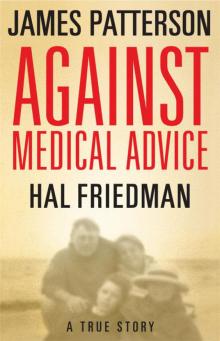 Against Medical Advice
Against Medical Advice The Quickie
The Quickie Little Black Dress
Little Black Dress Private Oz
Private Oz Homeroom Diaries
Homeroom Diaries Gone
Gone Lifeguard
Lifeguard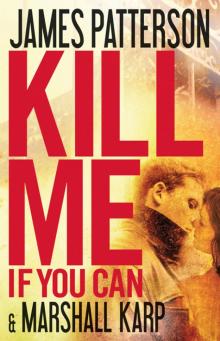 Kill Me if You Can
Kill Me if You Can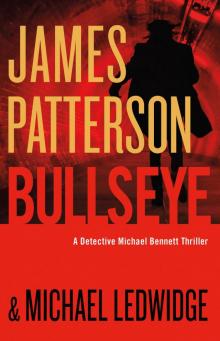 Bullseye
Bullseye Confessions of a Murder Suspect
Confessions of a Murder Suspect Black Friday
Black Friday Manhunt
Manhunt Filthy Rich
Filthy Rich Step on a Crack
Step on a Crack Private
Private Private India
Private India Game Over
Game Over Private Sydney
Private Sydney The Murder House
The Murder House Mistress
Mistress I, Michael Bennett
I, Michael Bennett The Gift
The Gift The Postcard Killers
The Postcard Killers The Shut-In
The Shut-In The House Husband
The House Husband The Lost
The Lost I, Alex Cross
I, Alex Cross Going Bush
Going Bush 16th Seduction
16th Seduction The Jester
The Jester Along Came a Spider
Along Came a Spider The Lake House
The Lake House Four Blind Mice
Four Blind Mice Tick Tock
Tick Tock Private L.A.
Private L.A. Middle School, the Worst Years of My Life
Middle School, the Worst Years of My Life Cross Country
Cross Country The Final Warning
The Final Warning Word of Mouse
Word of Mouse Come and Get Us
Come and Get Us Sail
Sail I Funny TV: A Middle School Story
I Funny TV: A Middle School Story Private London
Private London Save Rafe!
Save Rafe! Swimsuit
Swimsuit Sam's Letters to Jennifer
Sam's Letters to Jennifer 3rd Degree
3rd Degree Double Cross
Double Cross Judge & Jury
Judge & Jury Kiss the Girls
Kiss the Girls Second Honeymoon
Second Honeymoon Guilty Wives
Guilty Wives 1st to Die
1st to Die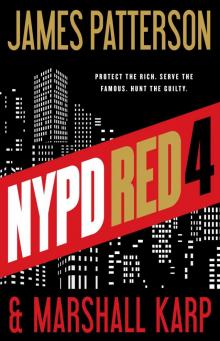 NYPD Red 4
NYPD Red 4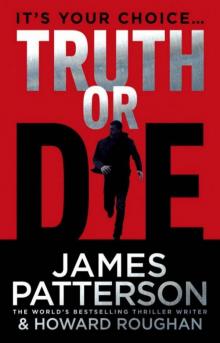 Truth or Die
Truth or Die Private Vegas
Private Vegas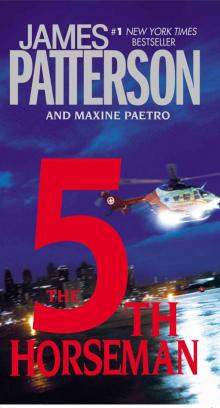 The 5th Horseman
The 5th Horseman 7th Heaven
7th Heaven I Even Funnier
I Even Funnier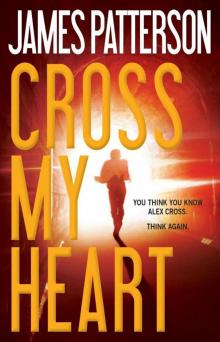 Cross My Heart
Cross My Heart Let’s Play Make-Believe
Let’s Play Make-Believe Violets Are Blue
Violets Are Blue Zoo
Zoo Home Sweet Murder
Home Sweet Murder The Private School Murders
The Private School Murders Alex Cross, Run
Alex Cross, Run Hunted: BookShots
Hunted: BookShots The Fire
The Fire Chase
Chase 14th Deadly Sin
14th Deadly Sin Bloody Valentine
Bloody Valentine The 17th Suspect
The 17th Suspect The 8th Confession
The 8th Confession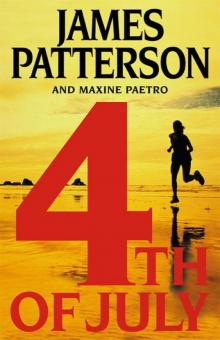 4th of July
4th of July The Angel Experiment
The Angel Experiment Crazy House
Crazy House School's Out - Forever
School's Out - Forever Suzanne's Diary for Nicholas
Suzanne's Diary for Nicholas Cross Justice
Cross Justice Maximum Ride Forever
Maximum Ride Forever The Thomas Berryman Number
The Thomas Berryman Number Honeymoon
Honeymoon The Medical Examiner
The Medical Examiner Killer Chef
Killer Chef Private Princess
Private Princess Private Games
Private Games Burn
Burn 10th Anniversary
10th Anniversary I Totally Funniest: A Middle School Story
I Totally Funniest: A Middle School Story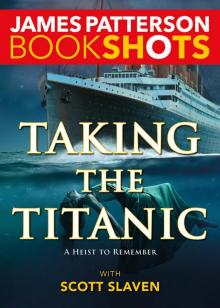 Taking the Titanic
Taking the Titanic The Lawyer Lifeguard
The Lawyer Lifeguard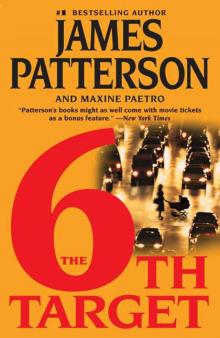 The 6th Target
The 6th Target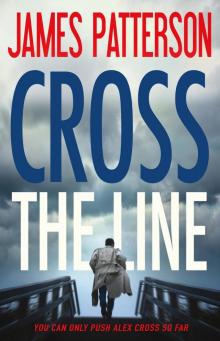 Cross the Line
Cross the Line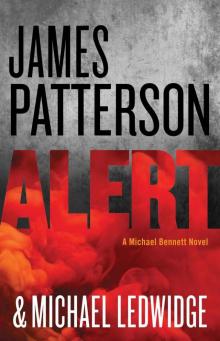 Alert
Alert Saving the World and Other Extreme Sports
Saving the World and Other Extreme Sports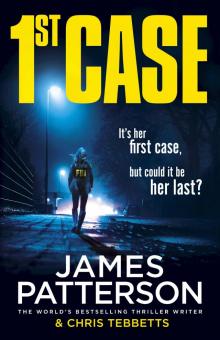 1st Case
1st Case Unlucky 13
Unlucky 13 Haunted
Haunted Cross
Cross Lost
Lost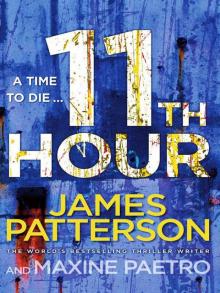 11th Hour
11th Hour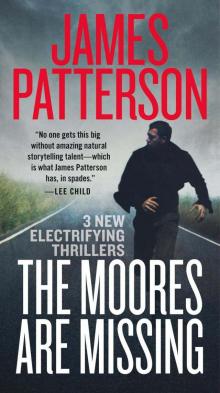 Bookshots Thriller Omnibus
Bookshots Thriller Omnibus Target: Alex Cross
Target: Alex Cross Hope to Die
Hope to Die The Noise
The Noise Worst Case
Worst Case Dog's Best Friend
Dog's Best Friend Nevermore: The Final Maximum Ride Adventure
Nevermore: The Final Maximum Ride Adventure I Funny: A Middle School Story
I Funny: A Middle School Story NYPD Red
NYPD Red Till Murder Do Us Part
Till Murder Do Us Part Black & Blue
Black & Blue Fang
Fang Liar Liar
Liar Liar The Inn
The Inn Sundays at Tiffany's
Sundays at Tiffany's Middle School: Escape to Australia
Middle School: Escape to Australia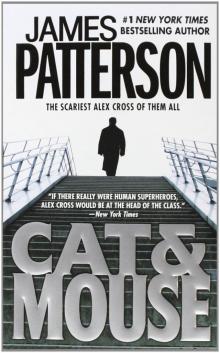 Cat and Mouse
Cat and Mouse Instinct
Instinct The Black Book
The Black Book London Bridges
London Bridges Toys
Toys The Last Days of John Lennon
The Last Days of John Lennon Roses Are Red
Roses Are Red Witch & Wizard
Witch & Wizard The Dolls
The Dolls The Christmas Wedding
The Christmas Wedding The River Murders
The River Murders The 18th Abduction
The 18th Abduction The 19th Christmas
The 19th Christmas Middle School: How I Got Lost in London
Middle School: How I Got Lost in London Just My Rotten Luck
Just My Rotten Luck Red Alert
Red Alert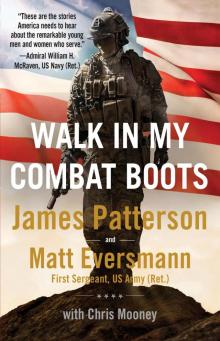 Walk in My Combat Boots
Walk in My Combat Boots Three Women Disappear
Three Women Disappear 21st Birthday
21st Birthday All-American Adventure
All-American Adventure Becoming Muhammad Ali
Becoming Muhammad Ali The Murder of an Angel
The Murder of an Angel The 13-Minute Murder
The 13-Minute Murder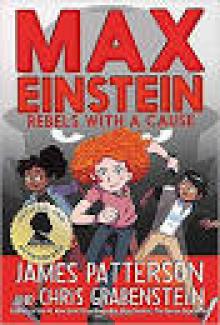 Rebels With a Cause
Rebels With a Cause The Trial
The Trial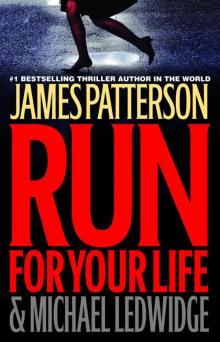 Run for Your Life
Run for Your Life The House Next Door
The House Next Door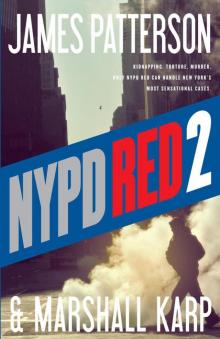 NYPD Red 2
NYPD Red 2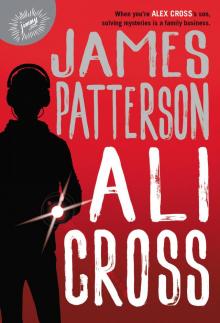 Ali Cross
Ali Cross The Big Bad Wolf
The Big Bad Wolf Middle School: My Brother Is a Big, Fat Liar
Middle School: My Brother Is a Big, Fat Liar Private Paris
Private Paris Miracle on the 17th Green
Miracle on the 17th Green The People vs. Alex Cross
The People vs. Alex Cross The Beach House
The Beach House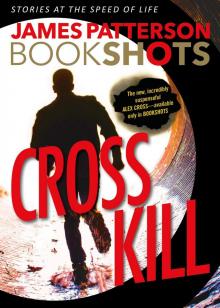 Cross Kill
Cross Kill Dog Diaries
Dog Diaries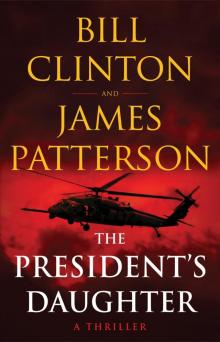 The President's Daughter
The President's Daughter Happy Howlidays
Happy Howlidays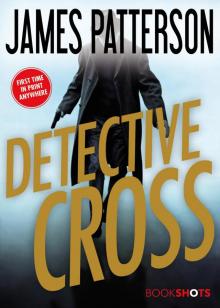 Detective Cross
Detective Cross The Paris Mysteries
The Paris Mysteries Watch the Skies
Watch the Skies 113 Minutes
113 Minutes Alex Cross's Trial
Alex Cross's Trial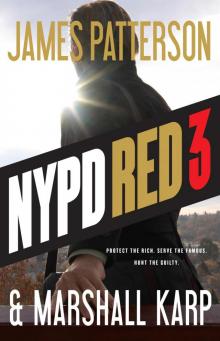 NYPD Red 3
NYPD Red 3 Hush Hush
Hush Hush Now You See Her
Now You See Her Merry Christmas, Alex Cross
Merry Christmas, Alex Cross 2nd Chance
2nd Chance Private Royals
Private Royals Two From the Heart
Two From the Heart Max
Max I, Funny
I, Funny Blindside (Michael Bennett)
Blindside (Michael Bennett) Sophia, Princess Among Beasts
Sophia, Princess Among Beasts Armageddon
Armageddon Don't Blink
Don't Blink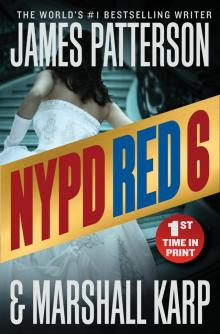 NYPD Red 6
NYPD Red 6 The First Lady
The First Lady Texas Outlaw
Texas Outlaw Hush
Hush Beach Road
Beach Road Private Berlin
Private Berlin The Family Lawyer
The Family Lawyer Jack & Jill
Jack & Jill The Midwife Murders
The Midwife Murders Middle School: Rafe's Aussie Adventure
Middle School: Rafe's Aussie Adventure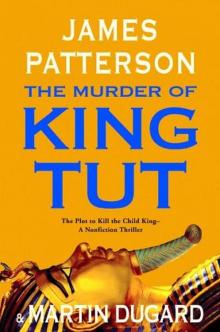 The Murder of King Tut: The Plot to Kill the Child King
The Murder of King Tut: The Plot to Kill the Child King First Love
First Love The Dangerous Days of Daniel X
The Dangerous Days of Daniel X Hawk
Hawk Private Delhi
Private Delhi The 20th Victim
The 20th Victim The Shadow
The Shadow Katt vs. Dogg
Katt vs. Dogg The Palm Beach Murders
The Palm Beach Murders 2 Sisters Detective Agency
2 Sisters Detective Agency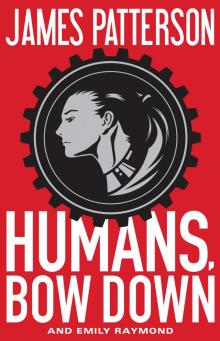 Humans, Bow Down
Humans, Bow Down You've Been Warned
You've Been Warned Cradle and All
Cradle and All 20th Victim: (Women’s Murder Club 20) (Women's Murder Club)
20th Victim: (Women’s Murder Club 20) (Women's Murder Club) Season of the Machete
Season of the Machete Woman of God
Woman of God Mary, Mary
Mary, Mary Blindside
Blindside Invisible
Invisible The Chef
The Chef Revenge
Revenge See How They Run
See How They Run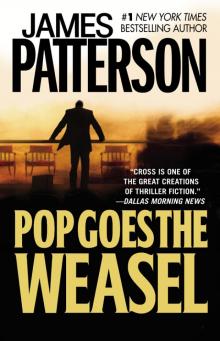 Pop Goes the Weasel
Pop Goes the Weasel 15th Affair
15th Affair Middle School: Get Me Out of Here!
Middle School: Get Me Out of Here! Middle School: How I Survived Bullies, Broccoli, and Snake Hill
Middle School: How I Survived Bullies, Broccoli, and Snake Hill From Hero to Zero - Chris Tebbetts
From Hero to Zero - Chris Tebbetts G'day, America
G'day, America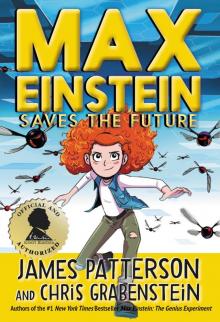 Max Einstein Saves the Future
Max Einstein Saves the Future The Cornwalls Are Gone
The Cornwalls Are Gone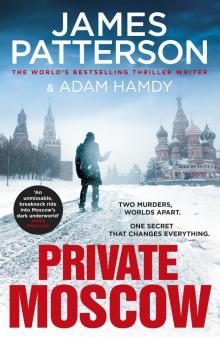 Private Moscow
Private Moscow Two Schools Out - Forever
Two Schools Out - Forever Hollywood 101
Hollywood 101 Deadly Cargo: BookShots
Deadly Cargo: BookShots 21st Birthday (Women's Murder Club)
21st Birthday (Women's Murder Club) The Sky Is Falling
The Sky Is Falling Cajun Justice
Cajun Justice Bennett 06 - Gone
Bennett 06 - Gone The House of Kennedy
The House of Kennedy Waterwings
Waterwings Murder is Forever, Volume 2
Murder is Forever, Volume 2 Maximum Ride 02
Maximum Ride 02 Treasure Hunters--The Plunder Down Under
Treasure Hunters--The Plunder Down Under Private Royals: BookShots (A Private Thriller)
Private Royals: BookShots (A Private Thriller) After the End
After the End Private India: (Private 8)
Private India: (Private 8) Escape to Australia
Escape to Australia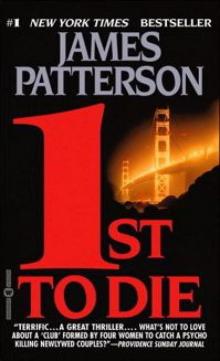 WMC - First to Die
WMC - First to Die Boys Will Be Boys
Boys Will Be Boys The Red Book
The Red Book 11th hour wmc-11
11th hour wmc-11 Hidden
Hidden You've Been Warned--Again
You've Been Warned--Again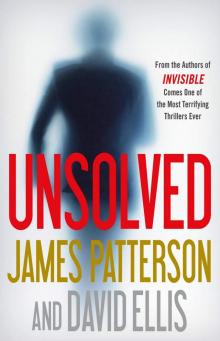 Unsolved
Unsolved Pottymouth and Stoopid
Pottymouth and Stoopid Hope to Die: (Alex Cross 22)
Hope to Die: (Alex Cross 22) The Moores Are Missing
The Moores Are Missing Black & Blue: BookShots (Detective Harriet Blue Series)
Black & Blue: BookShots (Detective Harriet Blue Series)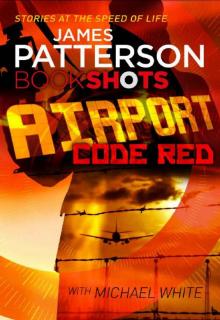 Airport - Code Red: BookShots
Airport - Code Red: BookShots Kill or Be Killed
Kill or Be Killed School's Out--Forever
School's Out--Forever When the Wind Blows
When the Wind Blows Heist: BookShots
Heist: BookShots Murder of Innocence (Murder Is Forever)
Murder of Innocence (Murder Is Forever) Red Alert_An NYPD Red Mystery
Red Alert_An NYPD Red Mystery Malicious
Malicious Scott Free
Scott Free The Summer House
The Summer House French Kiss
French Kiss Treasure Hunters
Treasure Hunters Murder Is Forever, Volume 1
Murder Is Forever, Volume 1 Secret of the Forbidden City
Secret of the Forbidden City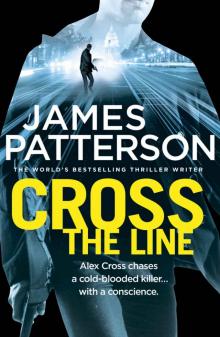 Cross the Line: (Alex Cross 24)
Cross the Line: (Alex Cross 24) Witch & Wizard: The Fire
Witch & Wizard: The Fire![Women's Murder Club [06] The 6th Target Read online](http://i1.bookreadfree.com/i/03/24/womens_murder_club_06_the_6th_target_preview.jpg) Women's Murder Club [06] The 6th Target
Women's Murder Club [06] The 6th Target Cross My Heart ac-21
Cross My Heart ac-21 Alex Cross’s Trial ак-15
Alex Cross’s Trial ак-15 Alex Cross 03 - Jack & Jill
Alex Cross 03 - Jack & Jill Liar Liar: (Harriet Blue 3) (Detective Harriet Blue Series)
Liar Liar: (Harriet Blue 3) (Detective Harriet Blue Series) Cross Country ак-14
Cross Country ак-14 Honeymoon h-1
Honeymoon h-1 Maximum Ride: The Angel Experiment
Maximum Ride: The Angel Experiment The Big Bad Wolf ак-9
The Big Bad Wolf ак-9 Dead Heat: BookShots (Book Shots)
Dead Heat: BookShots (Book Shots) Kill and Tell
Kill and Tell Avalanche
Avalanche Robot Revolution
Robot Revolution Public School Superhero
Public School Superhero 12th of Never
12th of Never Max: A Maximum Ride Novel
Max: A Maximum Ride Novel All-American Murder
All-American Murder Murder Games
Murder Games Robots Go Wild!
Robots Go Wild! My Life Is a Joke
My Life Is a Joke Private: Gold
Private: Gold Demons and Druids
Demons and Druids Jacky Ha-Ha
Jacky Ha-Ha Postcard killers
Postcard killers Princess: A Private Novel
Princess: A Private Novel Kill Alex Cross ac-18
Kill Alex Cross ac-18 12th of Never wmc-12
12th of Never wmc-12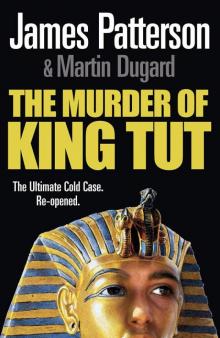 The Murder of King Tut
The Murder of King Tut I Totally Funniest
I Totally Funniest Cross Fire ак-17
Cross Fire ак-17 Count to Ten
Count to Ten![Women's Murder Club [10] 10th Anniversary Read online](http://i1.bookreadfree.com/i1/03/30/womens_murder_club_10_10th_anniversary_preview.jpg) Women's Murder Club [10] 10th Anniversary
Women's Murder Club [10] 10th Anniversary![Women's Murder Club [01] 1st to Die Read online](http://i1.bookreadfree.com/i1/03/31/womens_murder_club_01_1st_to_die_preview.jpg) Women's Murder Club [01] 1st to Die
Women's Murder Club [01] 1st to Die I, Michael Bennett mb-5
I, Michael Bennett mb-5 Nooners
Nooners![Women's Murder Club [08] The 8th Confession Read online](http://i1.bookreadfree.com/i1/04/03/womens_murder_club_08_the_8th_confession_preview.jpg) Women's Murder Club [08] The 8th Confession
Women's Murder Club [08] The 8th Confession Private jm-1
Private jm-1 Treasure Hunters: Danger Down the Nile
Treasure Hunters: Danger Down the Nile Worst Case mb-3
Worst Case mb-3 Don’t Blink
Don’t Blink The Games
The Games The Medical Examiner: A Women's Murder Club Story
The Medical Examiner: A Women's Murder Club Story Black Market
Black Market Gone mb-6
Gone mb-6![Women's Murder Club [02] 2nd Chance Read online](http://i1.bookreadfree.com/i1/04/04/womens_murder_club_02_2nd_chance_preview.jpg) Women's Murder Club [02] 2nd Chance
Women's Murder Club [02] 2nd Chance French Twist
French Twist Kenny Wright
Kenny Wright Manhunt: A Michael Bennett Story
Manhunt: A Michael Bennett Story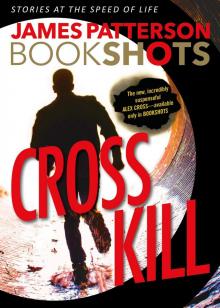 Cross Kill: An Alex Cross Story
Cross Kill: An Alex Cross Story Confessions of a Murder Suspect td-1
Confessions of a Murder Suspect td-1 Second Honeymoon h-2
Second Honeymoon h-2 Chase_A BookShot_A Michael Bennett Story
Chase_A BookShot_A Michael Bennett Story Confessions: The Paris Mysteries
Confessions: The Paris Mysteries![Women's Murder Club [09] The 9th Judgment Read online](http://i1.bookreadfree.com/i2/04/08/womens_murder_club_09_the_9th_judgment_preview.jpg) Women's Murder Club [09] The 9th Judgment
Women's Murder Club [09] The 9th Judgment Absolute Zero
Absolute Zero Nevermore: The Final Maximum Ride Adventure mr-8
Nevermore: The Final Maximum Ride Adventure mr-8 Angel: A Maximum Ride Novel mr-7
Angel: A Maximum Ride Novel mr-7 Juror #3
Juror #3 Million-Dollar Mess Down Under
Million-Dollar Mess Down Under The Verdict: BookShots (A Jon Roscoe Thriller)
The Verdict: BookShots (A Jon Roscoe Thriller) The President Is Missing: A Novel
The President Is Missing: A Novel![Women's Murder Club [04] 4th of July Read online](http://i1.bookreadfree.com/i2/04/06/womens_murder_club_04_4th_of_july_preview.jpg) Women's Murder Club [04] 4th of July
Women's Murder Club [04] 4th of July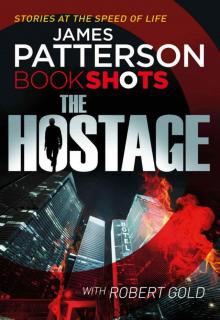 The Hostage: BookShots (Hotel Series)
The Hostage: BookShots (Hotel Series) $10,000,000 Marriage Proposal
$10,000,000 Marriage Proposal Diary of a Succubus
Diary of a Succubus Unbelievably Boring Bart
Unbelievably Boring Bart Angel: A Maximum Ride Novel
Angel: A Maximum Ride Novel Stingrays
Stingrays Confessions: The Private School Murders
Confessions: The Private School Murders Stealing Gulfstreams
Stealing Gulfstreams![Women's Murder Club [05] The 5th Horseman Read online](http://i1.bookreadfree.com/i2/04/05/womens_murder_club_05_the_5th_horseman_preview.jpg) Women's Murder Club [05] The 5th Horseman
Women's Murder Club [05] The 5th Horseman Zoo 2
Zoo 2 Jack Morgan 02 - Private London
Jack Morgan 02 - Private London Treasure Hunters--Quest for the City of Gold
Treasure Hunters--Quest for the City of Gold The Christmas Mystery
The Christmas Mystery Murder in Paradise
Murder in Paradise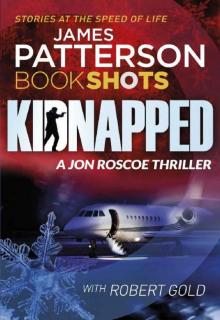 Kidnapped: BookShots (A Jon Roscoe Thriller)
Kidnapped: BookShots (A Jon Roscoe Thriller) Triple Homicide_Thrillers
Triple Homicide_Thrillers 16th Seduction: (Women’s Murder Club 16) (Women's Murder Club)
16th Seduction: (Women’s Murder Club 16) (Women's Murder Club) 14th Deadly Sin: (Women’s Murder Club 14)
14th Deadly Sin: (Women’s Murder Club 14) Texas Ranger
Texas Ranger Witch & Wizard 04 - The Kiss
Witch & Wizard 04 - The Kiss![Women's Murder Club [03] 3rd Degree Read online](http://i1.bookreadfree.com/i2/04/12/womens_murder_club_03_3rd_degree_preview.jpg) Women's Murder Club [03] 3rd Degree
Women's Murder Club [03] 3rd Degree Break Point: BookShots
Break Point: BookShots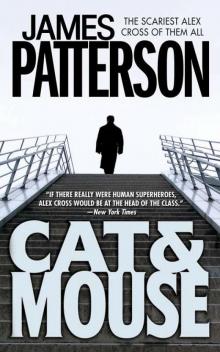 Alex Cross 04 - Cat & Mouse
Alex Cross 04 - Cat & Mouse Maximum Ride
Maximum Ride Fifty Fifty: (Harriet Blue 2) (Detective Harriet Blue Series)
Fifty Fifty: (Harriet Blue 2) (Detective Harriet Blue Series) Alex Cross 02 - Kiss the Girls
Alex Cross 02 - Kiss the Girls The President Is Missing
The President Is Missing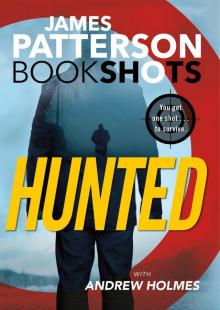 Hunted
Hunted House of Robots
House of Robots Dangerous Days of Daniel X
Dangerous Days of Daniel X Tick Tock mb-4
Tick Tock mb-4 10th Anniversary wmc-10
10th Anniversary wmc-10 The Exile
The Exile Private Games-Jack Morgan 4 jm-4
Private Games-Jack Morgan 4 jm-4 Burn: (Michael Bennett 7)
Burn: (Michael Bennett 7) Laugh Out Loud
Laugh Out Loud The People vs. Alex Cross: (Alex Cross 25)
The People vs. Alex Cross: (Alex Cross 25)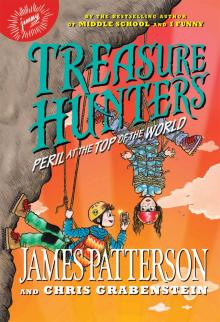 Peril at the Top of the World
Peril at the Top of the World I Funny TV
I Funny TV Merry Christmas, Alex Cross ac-19
Merry Christmas, Alex Cross ac-19 #1 Suspect jm-3
#1 Suspect jm-3 Fang: A Maximum Ride Novel
Fang: A Maximum Ride Novel![Women's Murder Club [07] 7th Heaven Read online](http://i1.bookreadfree.com/i2/04/13/womens_murder_club_07_7th_heaven_preview.jpg) Women's Murder Club [07] 7th Heaven
Women's Murder Club [07] 7th Heaven The End
The End